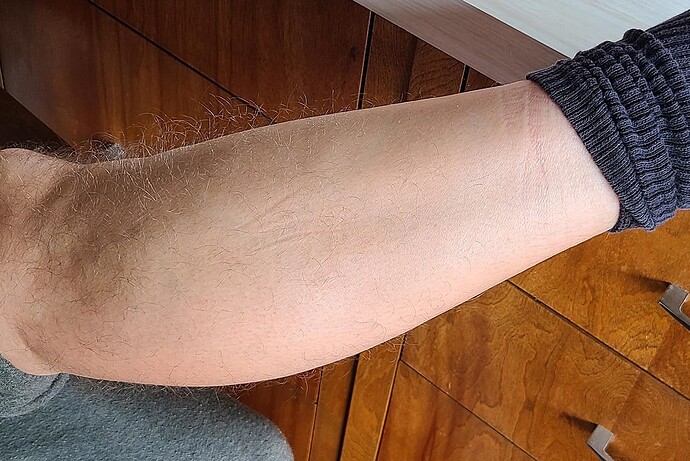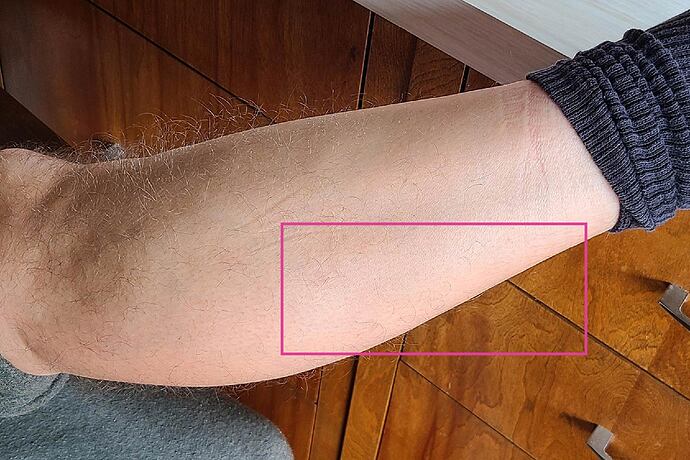Hi,
I posted to Reddit (thought originally wanted to post here) this thread with some photos of my legs showing hairless patches achieved by total accident:
Seems I stumbled on ‘frictional alopecia’!
I now want to try to develop a deliberate protocol of post-hair removal friction, which - so long as you keep it up:-
-
indefinitely prevents new hairs from growing (like my gumboots do, if done enough);
-
works even while applying daily aloe vera to the skin for skin health purposes, and also to reverse any risky abrasion caused by this daily friction (infection-wise).
I assume pumice might be enough, or exfoliating gloves etc. Many people exfoliate regularly, but this protocol may have to be more friction than what people normally do - more minutes per day vs. a normal ‘quick exfoliation’.
Any thoughts on how to develop this? If enough friction is applied to the follicles, even if they’re constantly being re-nourished by the strong counteraction of aloe vera every day, perhaps the follicles will ‘get the memo’ to not produce new hairs because of the regular friction?
I’m just trying to emulate my gumboots accident (on all areas including facial), while not ruining my skin either.
This would be a holy grail (in that you can then avoid future instances of whole-hair removal after your initial one, which is always a painful thing no matter what method, AFAIK, at least among non-toxic methods like sugaring), even though it does take daily effort.
Best of all is that to keep an option open to become hairy again if you want, this would be a more easily reversible form of ‘permanent’ hair loss vs. having newly produced hairs removed again and again as the method to do it, which may cause full permanency.


 ) NO mess made by visible hairs falling on the sink. You can do it on the couch while watching a movie. NO water or shaving gel needed. Just rub your skin. Exfoliation is a mere bonus.
) NO mess made by visible hairs falling on the sink. You can do it on the couch while watching a movie. NO water or shaving gel needed. Just rub your skin. Exfoliation is a mere bonus.